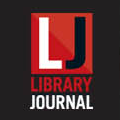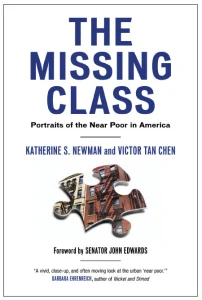For details about Victor’s other books, go to the Books page.
Fifty-four million Americans—including 21 percent of the nation’s children—live a notch above the poverty line, and yet the challenges they face are largely ignored. While government programs assist the poor, and politicians woo the more fortunate, the “Missing Class” is largely invisible and left to fend for itself.
Missing Class parents often work at a breakneck pace to preserve the progress they have made and are but one divorce or unexpected hospitalization away from sliding into poverty. Children face an even more perilous and uncertain future because their parents have so little time to help them with their schoolwork or guide them during their adolescent years. With little supervision, the younger generation often flounders in school, sometimes falling prey to the same problems that are prevalent in the much poorer communities that border Missing Class neighborhoods. Paradoxically, the very efforts that enabled parents to get ahead financially often inhibit their children from advancing; they are in real danger of losing what little ground their parents have gained.
The Missing Class: Portraits of the Near Poor in America is an urgent and timely exploration that describes-through the experiences of nine families-the unique problems faced by this growing class of people who are neither working poor nor middle class. Katherine S. Newman and Victor Tan Chen trace where these families came from, how they’ve struggled to make a decent living, and why they’re stuck without a safety net. An eloquent argument for the need to think about inequality in a broader way, The Missing Class has much to tell us about whether the American dream still exists for those who are sacrificing daily to achieve it.
The Missing Class was published by Beacon Press.
Buy the Book
Bookshop.org | IndieBound | Powell’s | Amazon | Barnes & Noble | Beacon Press (Publisher)
Praise
At last, a focus on people who struggle from month to month with housing, health care, and education costs but don’t fit into the government’s comfortingly minimalist definition of poverty. Newman and Chen give us a vivid, close-up, and often moving look at the urban ‘near poor.’ An excellent follow-up to Newman’s essential body of work on America’s economic anxieties.
—Barbara Ehrenreich
Author of Nickel and Dimed: On (Not) Getting By in America
With riveting detail, The Missing Class uses the compelling stories of nine families to portray a neglected group—more numerous than the officially poor—who work hard, play by the rules, yet live on the brink of disaster, one unlucky step away from plunging into poverty. Sensible and realistic programs, Newman and Chen show, could prevent their fall, reduce their insecurity, and help the Missing Class join the middle class.
—Michael B. Katz
Author of One Nation Divisible: What America Was and What It Is Becoming
Just above the artificial poverty line, millions of hard-working people struggle invisibly to gain a foothold on the promise of the American Dream. Their raw hardships and persistent hopes, collected in this book of unflinching portraits, ought to sound the alarm for an America grown complacent.
—David Shipler
Author of The Working Poor: Invisible in America
The strength of The Missing Class is its storytelling, which sets this book far above other nonfiction books about class and poverty. Through well-developed portraits and strong narrative writing, the experiences and struggles of nine New York City families emerge in all their humanness and difficulty. Common threads in these stories include heroic efforts to stay out of poverty and troubling episodes of irresponsible fathers and men, rocky relationships, and the reckless use of credit cards. Newman and Chen put a human face on the interaction of personal choices and economic and government policies.
—Chuck Collins
Sojourners Magazine

Named one of the Best Business Books of 2007 by Library Journal.
Anthologized in The Inequality Reader: Contemporary and Foundational Readings in Race, Class, and Gender, 2nd ed., edited by David B. Grusky and Szonja Szelényi (Boulder, CO: Westview Press, 2011), 147–52.

One thought on “The Missing Class”
Comments are closed.